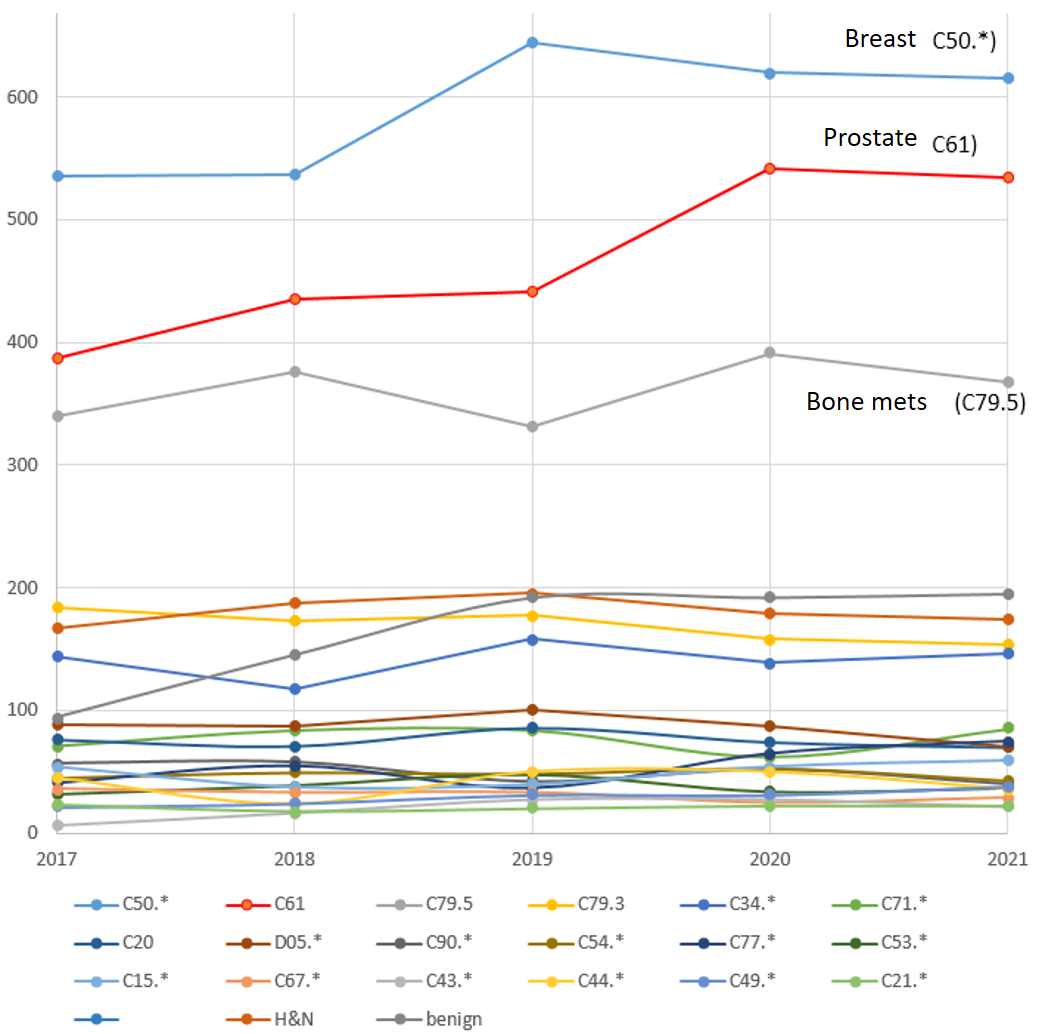Rise of irradiated patients with prostate cancer and no other tumours during the corona pandemy
PO-1094
Abstract
Rise of irradiated patients with prostate cancer and no other tumours during the corona pandemy
Authors: Thomas Brunner1, Tanja Langsenlehner1, Heidi Stranzl-Lawatsch1, Peter Winkler1
1Medical University of Graz, Radiation Oncology, Graz, Austria
Show Affiliations
Hide Affiliations
Purpose or Objective
We aimed to analyse whether the corona pandemy caused changes in the distribution of the numbers of patients treated by radiotherapy taking into account the primary diagnoses of the patients over time.
Material and Methods
The analysis was conducted from 2017 to 2021 to compare three pre-pandemy years with two years during the pandemy. The departmental radiation oncology information system, ARIA (Varian®), was searched for patient numbers in combination with the diagnosis of the radiation treatment courses. Additionally, the list of appointments was screened for an analysis of the numbers of patients assigned to radiation oncology. Coding of primary disease was performed with the WHO medical classification list ‘International Classification of Diseases Version 10’ (ICD-10). The following questions were addressed: (1) monthly assignment of patients to the department, (2) yearly number of treated patiens by ICD-10 from 2017 through 2021, (3) the ratio of patients treated with radiotherapy and the patients assigned to the department by treatment years.
Results
The numbers of patients assigned to radiotherapy were significantly reduced during the time of the strict lockdown during April and May 2022. However, the number of citations quickly returned to the baseline level after the end of the lockdown. There is a continuous trend of an increasing number of patients assigned for radiotherapy between January 2018 and December 2021 with an increase from 280 patients per month to 330 patients per month on average.
The ratio of patients who received radiotherapy and the patients assigned to the department was at a median of 0.785 (range 0.77 – 0.81) without a trend over time (0.79, 0.78, 0.81, 0.77 in 2018, 2019, 2020 and 2021, respectively).
Analysis of the ICD-10 codes over time showed significant changes only for patients with prostate cancer and a trend for breast cancer, both increasing in 2020 and 2021 compared to prior to the pandemy years. This is illustrated by the graphs in Figure 1 showing primay diagnoses by ICD-10 from 2017 to 2021. The age distribution of men treated with radiotherapy for prostate cancer did not change over time (median 72,08; range 71.69 – 72.54 years old).

Conclusion
As expected, there was a dramatically reduced number of assigned patients during the strict lockdown phase, however with no significant fluctuations comparing the time before and during the pandemy. The prognostic importance is unknown to date.
On the other hand, the observed increase of patients treated with radiotherapy for prostate cancer is thought to be related to a reduction of the number of radical prostatavesiculectomies during the pandemy years as a consequence of reduced surgical capacities and of patients’ treatment choice to avoid hospitalisation. Future years after the pandemy will have to show, whether this was a temporary increase of patients treated for prostate cancer or not.